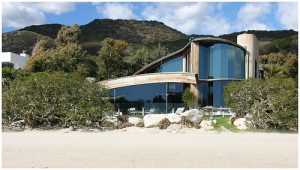Expectations
Between mountain ranges and the Pacific beaches, Los Angeles is embedded in a sort of paradisiac garden. A place where the earth is soaked with creativity and the minds can bloom. Where ideas can rise, and become something more than just illusions . The finish line of the western, modern final frontier seems to be the essence of civilizing development . All the cultural accomplishments of mankind are represented here and it could come to your mind that there is no further level to be reached. That there is only one step for us to take before bringing our science fiction fantasies to earth and space . But we must overcome ourselves to reach it. It’s an escape for those who seek for a new kind of freedom and a room to let their spirit fulfil itself, some might say . This all sounds too much for one place to be real and we are willing to proof these words right or wrong.
We, students of the art historian faculty at the Goethe University in Frankfurt am Main, have dedicated ourselves to this place of desire in the past semester. We searched for the trails of modernist architecture at the shores of the pacific and the slopes of the foothills. Our ledgers were architectural masterminds like Richard Neutra, Rudolf Schindler, John Lautner and Frank Gehry. During our studies one main statement was frequently repeated by many architects: Los Angeles is an ugly place.[1] And it seems to be true when also Reyner Banham describes the metropolis as dictated by the automobile and divided by its freeways.[2] But this statement doesn’t really fit in our idea of Los Angeles. The place of palms, beaches, beautiful, creative and rich people. So, for us there is still the question, if we could picture us the city correctly, when we are only looking on singular buildings – as those in Julius Schulman’s photographs . Do we require the aspects of mobility, reality and three-dimensionality, to understand the city of angels completely?
There is only one way to get some satisfying answers: boarding a plane.
So, we will follow the example of two European exiles and leave our continent: Richard Neutra and Rudolph Schindler, two Austrian architects, were attracted to the United States from hearsay of a place where they could fulfil their architectural dreams. As their new mentor, they had chosen Frank Lloyd Wright.[3] After stops in New York and Chicago, where they first met their idol, they found Los Angeles as their place to be . There they laid the fundament for modern architecture and following generations of architects. John Lautner and others followed and conquered the foothills by planting extraordinary structures, opening new sights on difficult sites.[4] But modernism seemed to be just a privilege for upper classes. Till the Case Study House Program was announced and tried to find forms which could be replicated for everyone.[5] While the program stuck in theory, some architects took on practical, often in suburbs or new settlements: William Krisel for example experimented in big scales, in the desert town of Palm Springs, to bring modernism to the masses. Another approach for modern architecture in everyone’s everyday life is, to build in a modernist way not only in the housing sector. Franklin D. Israel and Frank Gehry tried to think factories and cultural institutions modern. They were not the first, but especially Gehry managed to put this commercial architecture to a new level.
Like Banham we will drive on the freeways through architectural space and time. Neutra and Schindler are the starting point, followed by John Lautner. We will search for the starting point of modernism for the people in the Case Study House Program and practical approaches by William Krisel. Franklin D. Israel and Frank Gehry then will be the finish line for our excursion, but not for modern architecture in Los Angeles
[1] Olsberg, Nicholas, Between Earth and Heaven, 2008, p. 18.; James Steele and Franklin D. Israel, Interviews, 1994, p. 13.
[2] Banham, Reyner: The Architecture of Four Ecologies, 2001.
[3] Hines, Thomas S., California Calls You, 2010, p. 273.
[4] Campbell Lange, Barbara Ann: Lautner, 2005, pp. 19.
[5] Announcement, The Case Study House Program, Arts and Architecture, January 1945, p. 37-38.

